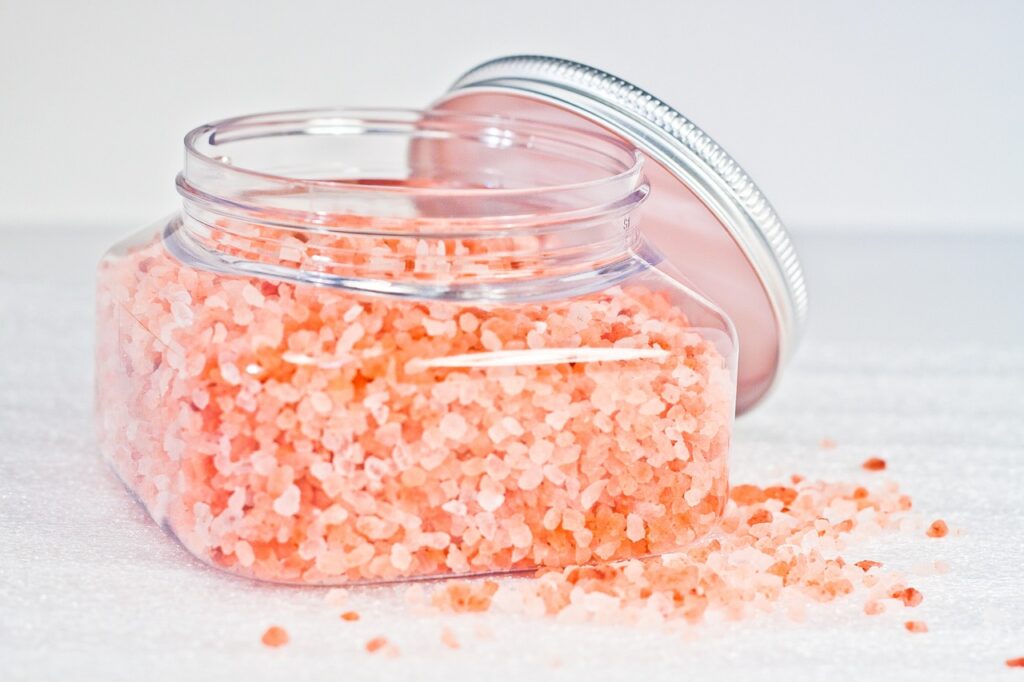Salt Extraction: From Nature to Your Table
The sea got its salt from the mythical Sampo, but what about us? How do we manage to get salt into our households? Let’s explore the fascinating journey of sea salt and rock salt from their natural sources to our tables.
Sea Salt Extraction
1. Collection:
- Process: Seawater is directed into large, shallow ponds or basins known as salt pans or salt evaporation ponds.
2. Evaporation:
- Process: As the seawater sits in the salt pans, the heat from the sun and the action of the wind cause the water to evaporate, leaving behind concentrated brine.
3. Crystallization:
- Process: These salt crystals gradually settle at the bottom of the pans.
4. Harvesting:
- Process: The salt is collected, often manually using rakes, and then washed to remove impurities.
5. Processing and Packaging:
- Process: It is then dried, graded, and packaged for distribution. Sea salt retains trace minerals that give it a distinct flavor and texture, making it a favorite for culinary uses.

Rock Salt Extraction
1. Mining:
- Process: Traditional mining methods involve digging shafts and tunnels to reach the salt beds. Modern techniques, like solution mining, involve injecting water into the salt deposit to dissolve the salt, creating a brine that is then pumped to the surface.
2. Crushing and Screening:
- Process: The rocks are crushed into smaller pieces and screened to separate impurities from the salt crystals.
3. Purification:
- Process: This often involves washing the salt with brine or fresh water.
4. Grinding and Packaging:
- Process: It is then packaged and distributed for various uses, including culinary, industrial, and medicinal applications. Rock salt, especially when ground, is a common household staple.
Whom to Pick? Understanding Different Types of Salt in Indian Cuisine
Salt is a fundamental ingredient in cooking, and Indian cuisine boasts a variety of salts, each with its unique flavor and health benefits. Let’s explore the differences between table salt, kaala namak, sendha namak, and the trendy Himalayan pink salt to determine which to pick for your culinary needs.
Types of Salt in Indian Cuisine
1. Table Salt
Description:
- Composition: Table salt is the most common form of salt, composed mainly of sodium chloride. It is typically refined and often contains added iodine to prevent iodine deficiency.
- Uses: Ideal for everyday cooking and baking, table salt dissolves quickly and evenly, making it versatile for a variety of dishes.
Health Aspect:
- Iodized Salt: The addition of iodine helps prevent iodine deficiency disorders, which is particularly important in regions where iodine deficiency is prevalent.
2. Kaala Namak (Black Salt)
Description:
- Composition: Kaala namak, also known as black salt, is a volcanic rock salt that undergoes a heating process, giving it a distinctive pinkish-brown color and a strong sulfurous odor.
- Uses: Commonly used in chaats, chutneys, raitas, and Ayurvedic medicine. It is prized for its unique flavor and digestive properties.
Health Aspect:
- Digestive Aid: Kaala namak is believed to aid digestion and improve appetite. It is also used in traditional medicine for its purported health benefits.
3. Sendha Namak (Rock Salt)
Description:
- Composition: Sendha namak, or rock salt, is naturally occurring and minimally processed, preserving its natural minerals.
- Uses: Ideal for seasoning dishes during fasting (vrat) and is used in many traditional Indian recipes.
Health Aspect:
- Natural Minerals: Sendha namak retains trace minerals like potassium, calcium, and magnesium, which contribute to its health benefits.
Himalayan Pink Salt
Description:
- Composition: Himalayan pink salt is a type of rock salt mined from the Punjab region of Pakistan. It is known for its distinctive pink color, which comes from trace minerals such as iron, potassium, and magnesium.
- Texture and Taste: It has a coarse texture and a more complex flavor than table salt.
- Uses: Popular in gourmet cooking and also used in salt lamps and bath salts.

Trend and Reality:
- Marketing Gimmick or Better Alternative? While Himalayan pink salt is marketed as a healthier alternative due to its mineral content, the actual health benefits over regular salt are minimal. The minerals present are in trace amounts and do not significantly impact overall nutrition.
- Aesthetic Appeal: The primary advantage of Himalayan pink salt is its aesthetic appeal and unique taste, making it a popular choice for finishing dishes.
Conclusion
No matter which type of salt you choose to use—whether it’s table salt, kaala namak, sendha namak, or Himalayan pink salt—the important thing is that it’s enhancing the flavor of your dishes and adding health benefits. Each type of salt brings its unique qualities to the table, enriching your culinary experience.
In our upcoming articles, we’ll dive deeper into the world of salt, exploring its diverse uses and benefits. Be sure to stay tuned for more insights and stories.
Stay curious with tales and tadka—until next time!




